The Goons over at Glaxon are always working hard in the supplement lab to develop new, innovative, and effective products. No longer an industry newcomer, Glaxon has found a role for itself as an ingredient pioneer.
It seems like every time we look, Glaxon is coming out with a new hit. We recently covered their new Multi+ Mood + Metabolism product that utilizes SAM-e, one of our favorite mood-enhancing ingredients. Honing in on what works is the Glaxon way.
Today, we're discussing a new update to an "older" product. Glaxon Supershrooms, an immunity-boosting mushroom blend, was originally released in 2020. The team has tinkered with the formula since then, adding in ergothioneine, which is an extremely cool ingredient that we'll dive into down below.
Supershrooms: Immunity, Endurance, and More
Supershrooms debuted with a powerful blend containing 7 different types of mushrooms with an eye for bolstering overall health from every angle. The synergy between mushrooms like lion's mane, cordyceps, reishi, and shiitake targets whole-body wellness, from the immune system and recovery to boosting brain function.
Since then, Glaxon has added MitoPrime (L-ergothioneine) from NNB Nutrition to the mix. MitoPrime ergothioneine is an antioxidant amino acid that serves as an awesome addition to the mix, especially if looking for immunity protection. Far from being the kind of brand to add fillers and fluff to their formulas, Glaxon focuses in on providing the best bang for your buck.
Before we get into it, let's check for some Glaxon deals on PricePlow:
Glaxon SuperShroom – Deals and Price Drop Alerts
Get Price Alerts
No spam, no scams.
Disclosure: PricePlow relies on pricing from stores with which we have a business relationship. We work hard to keep pricing current, but you may find a better offer.
Posts are sponsored in part by the retailers and/or brands listed on this page.
This area is reserved for Team PricePlow's upcoming Ingredients video.
Subscribe to our channel and sign up for notifications so you catch it when it goes live!
SuperShroom Ingredients
Glaxon recommends taking 2-4 capsules for optimal results. Each dose has the following ingredients:
-
Supershroom Organic Mushroom Blend - 1200mg
The Supershroom organic mushroom blend is a blend of seven mushroom strains: Maitake (Grifola frondosa), Cordyceps Militaris, Reishi (Ganoderma lucidum), King Trumpet (Pleurotus eryngii), Shiitake (Lentinula edodes), Lion's Mane (Hericium erinaceus), and Turkey Tail (Trametes versicolor), which are all 100% organically grown in the U.S. This blend also uses a combination of both the fruiting body (portion that grows above ground) and mycelium (the roots underground) for added benefits.
Mushrooms may sound simple, but they're actually incredibly complex and researchers don't fully understand how they operate. Mushrooms are technically classified as fungi, which have been living on this earth much longer than you or I. Even though there is still plenty to learn, research does point out some profound benefits from consuming an adequate amount of mushrooms for an extended period of time.
Mushrooms have been shown to have various health-boosting properties, including anti-inflammatory, antioxidant, anti-hypertensive, anti-viral, anti-microbial, anti-cancer, anti-diabetic, anti-obesity, liver protection, and cholesterol-lowering effects. Mushrooms are very complex, but we're going to simplify things by focusing on the main benefits you can expect to receive from SuperShroom. So let's get right to it!
-
Improved Gut Health
Mushrooms contain a wide variety of carbohydrates, such as beta and alpha glucans, mannans, xylans, galatians, chitin, and hemicellulose.[1] Because of this unique feature, mushrooms can act as a prebiotic fiber within the digestive tract. As a result, there's an increase in the growth of gut microbiota.[1] Enhancing the amount and diversity of microbiota within your digestive system can lead to several beneficial effects.
It's highly likely that you've heard of both prebiotics and probiotics, but do you understand the difference between the two? Prebiotics are specific forms of fiber that can feed the good bacteria in your gut, whereas probiotics are live bacteria that are found in several fermented foods. Both play an important role in overall gut health, but just understand that they result in different effects when ingested.
Studies show acting as a prebiotic fiber is one of the reasons why mushrooms have anti-cancer, anti-diabetic, and anti-obesity properties.[1] Because microbiota take on multiple key roles that keep you healthy, including the breakdown of various nutrients for increased absorption, immunomodulation, and drug metabolism.[1] Therefore, if you're not feeding your good bacteria with enough fuel (prebiotic fiber), then you're more likely to have less optimal gut health, which can lead to some major problems later on.
Furthermore, by acting as a prebiotic, mushrooms can help reduce endogenous pathogens that may enter the gastrointestinal tract,[1,2] which allows for enhanced functioning of the immune system. This is a very interesting effect, and we'll dive deeper into mushrooms' immune-boosting benefits in the next section!
But just know that a healthier gut is definitely linked to a stronger immune system!
-
Stronger Immune System
There are several natural herbs, plants, and fungi that are touted for their immune-boosting effects. Essentially, they help your internal defense mechanisms work more efficiently, leading to a decreased risk of getting sick, or if you're already sick, they may reduce the duration and severity of your symptoms. Your immune system is a very complex network consisting of a wide variety of specialized cells, organelles, and biological processes that all are designed to defend against foreign pathogens. The two main divisions of the immune system are the innate (nonspecific) and adaptive (specific) immune systems.[3,4]
Innate vs Adaptive Immune System
The innate immune system serves as your first line of defense and is typically able to eliminate or prevent entry of foreign viruses or bacteria through various mechanisms. The innate immune system comprises physical and anatomical barriers (skin, intestinal lining), and the following effector cells: natural killer (NK) cells, phagocytes. macrophages, monocytes, and neutrophils.[3] The barriers work to keep out any exogenous pathogens from entering the body in the first place. But if those fail, the effector cells will get to work by tracking down the invader and destroying it.
If the innate immune system isn't strong enough to take care of the pathogen, then that's where the body recruits the adaptive immune system to step in. Think of your adaptive immune system as a secret weapon, you only use it when all else fails.
The adaptive immune system mainly consists of T and B lymphocytes, which not only help kill the existing bacteria or virus, but also produce antibodies that prepare your body for future exposure to the same pathogen.[4] In general, this is how you build up immunity, and is one of the main reasons why vaccines are so effective. Your body gets exposed to an "inactive" form of a specific virus and it produces antibodies to make sure it's prepared for future attacks.
Mushrooms' Effects On The Immune System
At this point, you're probably wondering what does Supershrooms have to do with all this?
Well, research shows because mushrooms are rich in beta-glucans, they have the ability to activate various pathways of the immune system,[5-7] leading to increased recognition and phagocytosis of foreign bacteria and viruses, as well as damaged or infected cells.
Synergy between Maitake and Shiitake Mushrooms
A study done in 2014 found that oral supplementation of Maitake and Shiitake mushrooms, both of which are present in Supershrooms, significantly stimulated multiple effector cells of the innate immune system after just two weeks.[6] They also found that the combination of the two was more powerful than either on their own, suggesting there's a synergistic effect.
Turkey Tail provides polysaccharides
Another study showed that polysaccharides extracted from the fruiting bodies of Turkey Tail mushrooms led to the activation of macrophages,[7] which play a key role in getting rid of foreign invaders through phagocytosis (engulfment). And as we mentioned in the previous section, mushrooms have the ability to positively affect the gut,[1,2] further strengthening several aspects of the immune response.
Improved gut health and immune system response are not the only things mushrooms are capable of, they also can enhance performance and recovery!
-
Enhanced Recovery
We have to start off by saying that Joey Savage, the main formulator and borderline crazy scientist at Glaxon, still questions the ability of mushrooms to enhance recovery. However, with their mechanism of action on the immune system, it seems very possible.
SuperShroom puts the 'super' in SuperGreens.
That's why we're still going to cover it here, because as more research comes out, we will be better able to understand exactly how much they impact recovery. The majority of things we will discuss in this section goes back to the mushroom's ability to activate the immune system, because several of the cells involved in fighting against pathogens are also recruited to repair damaged muscle fibers. And as you'll see there is a close connection between the two.
When you go to the gym and do bicep curls until you can't move your arms, on a physiological level, you're creating tiny micro tears within the muscle, and this results in an inflammatory response. Inflammation can be good or bad depending on the context of the situation: if you have significant swelling, pain, and redness after rolling your ankle, you can blame this discomfort on inflammation. But if you feel sore after maxing out on squats, that's also inflammation.
In both scenarios, your body is trying to heal from some sort of damage. It achieves this by recruiting a wide variety of cells that are also connected to the immune system, to come clean up the debris and start the repair process. This primarily includes cells capable of phagocytosis, such as neutrophils and macrophages. The neutrophils are first to arrive on the scene, followed closely behind by macrophages. This dynamic duo works to clean up the damaged tissue, ultimately allowing the body to start the repair process.
Again, what does this have to do with fungi? Well as we mentioned in the immune section, mushrooms have immunostimulatory properties, leading to increased phagocytic cell activity.[5-7] If the neutrophils and macrophages can be activated quicker and more efficiently, then the body can start healing much faster.
Long story short: Due to mushrooms' mechanism of action, it makes sense that they can lead to enhanced recovery, but we would of course like to see more research before making any definite claims.
-
-
Ergothioneine – 5 mg
Ergothioneine (ET) is an amino acid that occurs naturally in familiar "superfoods", like wheat germ, black (fermented) garlic, liver, kidney, black beans, kidney beans, and oat bran.
It's also found in many species of edible medicinal mushroom, which is why Glaxon had the idea to include a little extra dose of it ET Supershrooms.
Found in mushrooms and organ meats, ergothioneine is the oldest -- and most overlooked -- energy-supporting immune system booster / antioxidant on the market. Prepare to have your mind blown by this ingredient.
Before we start discussing ET's almost unbelievable potential to improve human health and performance, we should point out that the whole-body bioavailability of the amino acid is relatively high.
This is thanks to the existence of a transporter protein called organic cation transporter novel-type 1 (OCTN1), which happens to be present in most tissue cells, and is extremely efficient at transporting ergothioneine into cells.[8,9]
Research shows that the body absorbs and distributes ET with great efficiency. The high bioavailability of ET, and its distribution throughout the entire body, is thought to be evidence that it plays an important role in human physiology.[10]
-
Immune effects
Whenever we talk about adaptogenic compounds, like the medicinal mushrooms used in Glaxon Supershrooms, one of the first topics to raise is immunological effects.
Ergothioneine serves a massive list of roles that align very highly with our modern immune concerns.[9]
Given that acute or chronic infections can substantially reduce quality of life and interfere with one's ability to flourish, there's arguably nothing more important for an adaptogenic supplement to do than help maintain proper immune function.
Both in vitro and in animal studies, ET has been shown to possess powerful anti-inflammatory qualities that can potentially alter the outcome of disease.
In one in vitro study conducted with muscle cells, ET significantly downregulated cells' inflammatory response to palmitic acid, a pro-inflammatory free fatty acid.[11] Compared to unadulterated cells, those that were pre-treated with ET survived at a much higher rate, and produced significantly less interleukin-6, which is a type of inflammatory cytokine.[11]
Given that ET can improve the survival rate of cells in vitro, does this mean it can limit the extent of tissue damage during inflammatory illness as well?
In order to answer that question, let's look at a couple animal studies.
-
Anti-inflammatory effects
In one of these, rats were supplemented with either ET or a placebo for 15 days before researchers induced ischemia.[12]
Prime your Mitochondria by sending it the strongest antioxidant they're already wired for - ergothioneine via MitoPrime.
For several hours after the ischemia, the researchers measured blood levels of inflammatory mediators, like cytokines. They also analyzed all the rats' intestinal tissue under a microscope.
They found that rats treated with ET had significantly less inflammation than the control group – and moreover, their intestinal tissue recovered from the ischemia much better. When viewed under the microscope, it was clear that the ET group's intestinal tissue structure was preserved much better than the controls'.[12]
In another study, rats were subjected to an experimental model of ARDS, an inflammatory condition of the lung. ARDS is of particular topical relevance these days because it can be triggered by the "cytokine storm" of runaway lung inflammation that's been observed in many cases of SARS-CoV-2 infection.'[13]
Compared to the control rats, ET rats had significantly less cytokine activity and tissue damage in their lungs.[13]
Ergothioneine inhibits pro-inflammatory myeloperoxidase (MPO)
As it turns out, ET can also act as a potent myeloperoxidase (MPO) inhibitor.[14] The reason this matters is that upregulated MPO activity is a major contributor to inflammation-driven tissue injury. So downregulating MPO can potentially spare cells and tissues from inflammatory damage.
Neutrophils, a type of white blood cell, rely heavily on MPO for functioning, which is why high neutrophil count is strongly associated with adverse outcomes in SARS-CoV-2 cases.[15,16] But it's not exactly the neutrophils themselves doing the damage – it's the MPO bundled with neutrophils.
Amazingly, ET has been shown to scavenge (i.e., clean up) the inflammatory free radicals generated by MPO-containing neutrophils even better than glutathione and vitamin C,[14] molecules both famed for their high antioxidant capacity.
This strongly suggests that ET can help prevent the inflammatory cytokine storm syndrome from occurring in patients with certain viral infections.
The high bioavailability of ET makes it potentially therapeutic for such conditions.[9]
The same mechanism of action makes ET a promising antithrombotic and anticoagulant agent as well.
This is because MPO plays a key role in developing extracellular matrices around neutrophils – neutrophil extracellular traps, or NETs for short – and these NETs bind to red blood cells.
When NETs get out of control, thrombosis (a clot) can be the result.[9,17]
So if our goal is to prevent clotting, inhibiting MPO activity is a promising strategy to adopt – and ET has been shown to do this.
Does ergothioneine have direct antiviral effects?
Although studies have shown that ET-containing mushroom extracts can directly inhibit the replication of certain viruses in vitro,[9] we're not aware of studies that isolated ET, meaning we can't be totally sure ET is the cause of the antiviral activity.
-
Cardiometabolic benefits
As we alluded to earlier, a person's ET blood levels can effectively predict their risk for disease. The less ET you have, the more likely you are, statistically speaking, to develop some pretty serious age-related neurological[18,19] and cardiovascular[20] ailments.
In fact, according to the study on the association between ET and CVD, "Ergothioneine was the metabolite most strongly connected to the HCFP [health conscious food pattern] and was associated with a lower risk of coronary disease (HR per 1 SD increment of ergothioneine, HR=0.85, p=0.01), cardiovascular mortality (HR=0.79, p=0.002) and overall mortality (HR=0.86, p=4e-5)."[20]
The HCFP referenced in this direct quotation stands for health-conscious food pattern, a way of eating that the researchers behind this study had previously identified as lowering a person's risk of CVD. Using statistical methods to weight the contribution of specific foods to CVD risk, the researchers noted that certain foods (e.g. fruits, berries, nuts, legumes, and yogurt) are associated with a significantly lower incidence of CVD.[21]
The health conscious food pattern (HCFP) identified by Swedish researchers as a way to reliably decrease one's risk of cardiovascular disease (CVD). The foods that score high on the HCFP have some key similarities – one being a tendency to increase ergothioneine blood levels in the people who eat them.[20,21]
The foods that score high on the HCFP have some obvious characteristics in common. For one, they're lower in sugar and high in fiber. With the exceptions of yogurt and cheese, they're also generally pretty low in dietary fat.We've all seen lists like this before – these are the foods we all know we're supposed to eat.
Well, as it turns out, the HCFP has another really interesting effect. Eating foods with a high HCFP score correlates with higher ET levels in the blood.[21]
The researchers behind the HCFP analyzed its characteristics in a follow-up study, and tried to identify a common molecular mechanism behind the health-promoting effects of all these different foods – a unified theory of nutrition, if you will.
Their conclusion?
"Ergothioneine had the strongest association with the HCFP and also the most evident protective associations with cardiometabolic morbidity and mortality independent of traditional risk factors."[20]
In other words, they believe ET is the most important thing all these very different healthy foods have in common.
It should be stressed that these relationships are correlational. It's not possible to assert, based on these studies, that increased ET intake is the cause of improved mortality – but they can definitely be the basis for future investigations.
-
Neurological benefits
The brain is exquisitely sensitive to oxidative stress and the resulting inflammation. So in the event of any inflammatory event – say, infection with a novel virus – it's not a bad idea to think about how your brain tissue could be protected from being damaged by the condition.
Defense against toxins
We've written about a lot of neuroprotective compounds here on the PricePlow Blog lately. One of these is lion's mane, an ET-rich mushroom that has been shown to protect neurons against damage by amyloid plaques.
One 2012 animal study found that purified, isolated ET can protect neurons against amyloid-induced injury,[22] so that's undoubtedly one of the mechanisms of action behind the ability of lion's mane extracts to do the same.
In vitro evidence suggests that ET can protect neurons from being damaged by excitotoxicity, a state in which the uncontrolled firing of neurons can cause neuroinflammation and even low-grade brain damage.[23]
But perhaps most interesting is a study in mice from 2010 showing that ET can protect brain tissue from being damaged by cisplatin,[24] which is a chemotherapy drug.
Neuronal growth and repair
Studies of the ET transporter protein, OCTN1, indicate that ET plays an important role in helping neurons grow and differentiate,[25] which is crucial for the process of brain healing following brain injury.
This process of neuronal growth is called neurogenesis.
A 2021 study in mice found that supplemental ET's ability to increase neurogenesis was significant enough to improve the rodents' performance on a memory test.[26]
Inverse correlation between blood ET and risk of neurological disease
Research indicates that ET might be essential for neurological health – low ET levels have been observed in patients with serious neurological diseases[18] as well as mild cognitive impairment.[19]
How much ergothioneine do we need?
A 2020 article published in the Journal of Nutritional Science speculates that relatively poor health outcomes in the United States – high incidence of neurological diseases in particular – correlate with the population's low average intake of ET compared to other, similarly developed countries.[27]
If you're looking for good stacking options, Supershrooms pairs extremely well with Glaxon's Liver Synergy.
On average, Italians get 4.6 milligrams of ET per day from their diet, whereas Americans only get 1.1 milligrams.[27]
Of the five countries examined in a study assessing average ET intake, Italy was shown to get the most and the U.S. the least, so that means anything in that range (1.1 mg to 4.6 mg) is likely a physiologically appropriate dose.
This makes the 5-milligram dose of ET used by Glaxon Supershrooms a particularly good choice – when used on a daily basis, Supershrooms can get you even a little more ET than the Italians get!
Is 5 milligrams of ergothioneine too much?
So how much is too much?
Nobody really knows yet – because so far, nobody has even successfully created a state of ergothioneine toxicity in animal models.
In safety trials of ET, doses as large as 1500 milligrams ET per kilogram body weight per day[28] and 1600 mg/kg/day[29] have been administered to mice and rats, without any observable increase in mortality.
The human equivalent dose of 1500 mg/kg/day is 250 mg/kg/day. This works out to a 17,000 milligram daily dose of ET for a 150 pound (or 68 kilogram) person.
Obviously, we aren't getting anywhere near doses that large.
Glaxon's new Multi + Mood + Metabolism is another awesome choice for keeping you feeling great all day long.
Both the U.S. Food and Drug Administration (FDA) and the the European Union's EFSA Panel on Dietetic Products, Nutrition and Allergies (NDA) has ruled that synthetic ETC supplements dosed at 5 milligrams per day are safe for use in humans.[9,30-32]
How can I get more ergothioneine from food?
Mushrooms! After all, they're the reason we're writing about Glaxon Supershrooms in the first place.
According to a 2020 study that analyzed ET intake in the United States, Americans aren't getting much ET because we don't eat a lot of mushrooms compared to Western European countries like Italy.[27]
The common white button mushroom (Agaricus bisporus), sold in virtually all U.S. supermarkets, contains about 630 milligrams of ET per kilogram dry weight.[27]
So if you want to get more ET in your diet, eat more mushrooms.
Or you could just take Glaxon Supershrooms instead. You can learn more in our article titled Glaxon Supershrooms Level Up Your Health with MitoPrime! (2023 Update).
-
Do You Want To Know More About Supershrooms? Check Out This Video From The Supplement Lab!
Hit Your Daily Dose of Fungi With Supershrooms!

Glaxon, as usual, is ahead of the curve -- even more so with the addition of MitoPrime. Ergothioneine is another ingredient that we are just beginning to understand how effective it is for wellness promotion on many different levels. Benefits ranging from immune support to increased cognitive function are common with ergothioneine, and we're excited to see it included in the Supershrooms formula.
It's an exciting time in the supplement industry, and Glaxon is consistently at the tip of the spear.
Glaxon SuperShroom – Deals and Price Drop Alerts
Get Price Alerts
No spam, no scams.
Disclosure: PricePlow relies on pricing from stores with which we have a business relationship. We work hard to keep pricing current, but you may find a better offer.
Posts are sponsored in part by the retailers and/or brands listed on this page.
Note: This article was originally published on April 6, 2020, and updated on January 30, 2022.
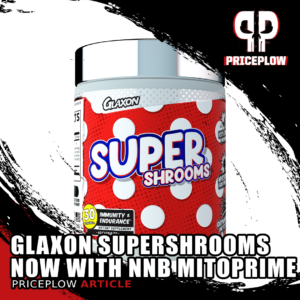
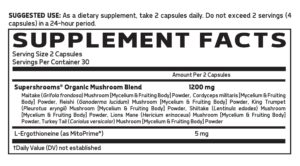

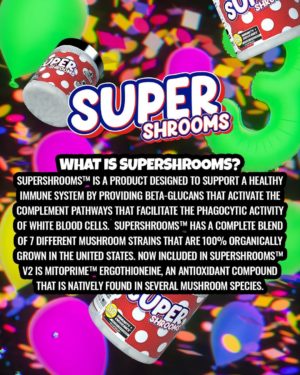
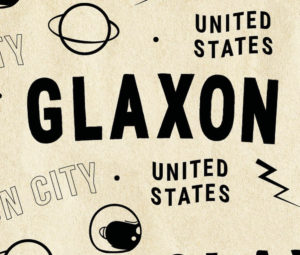
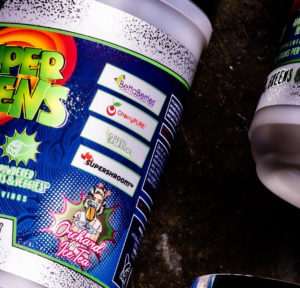
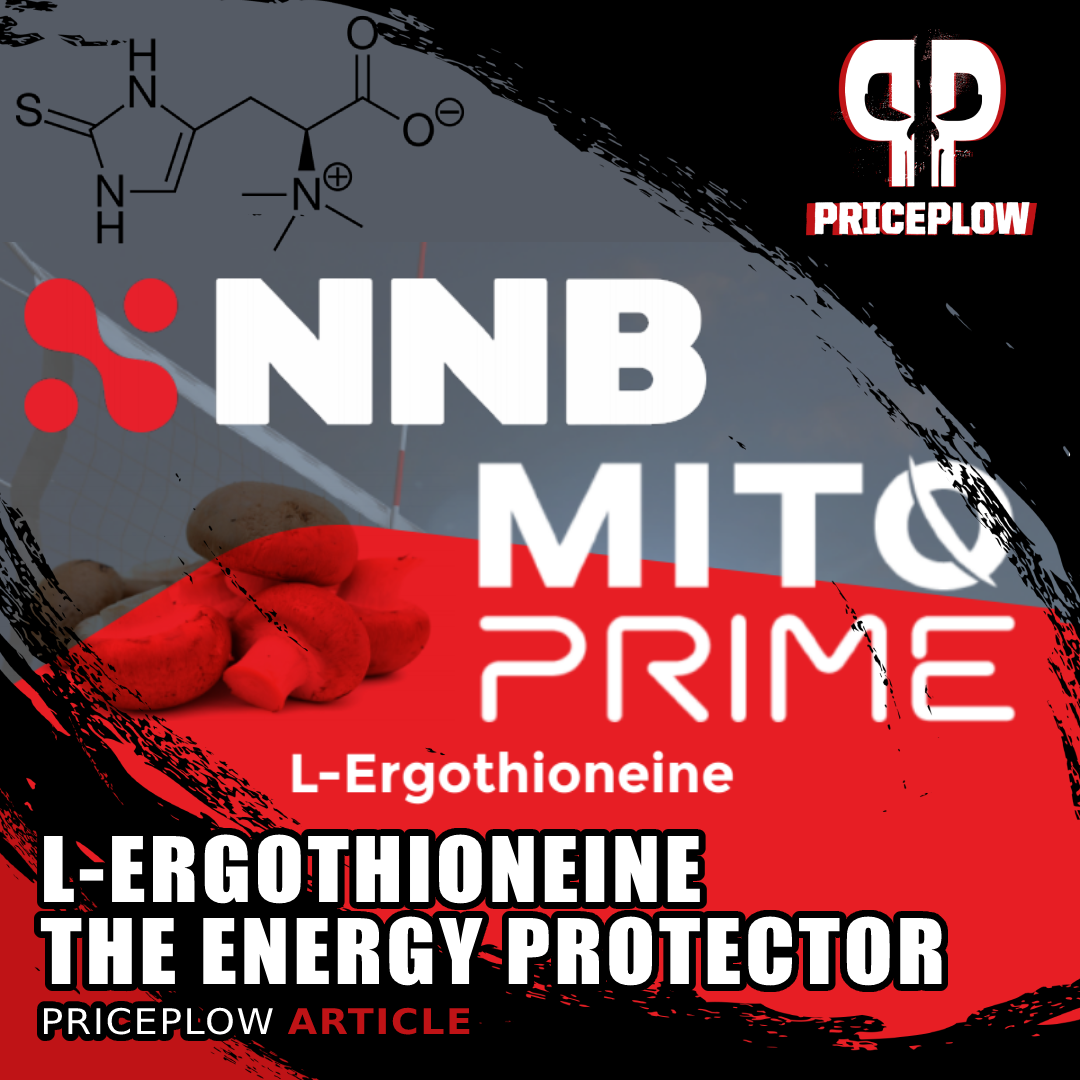
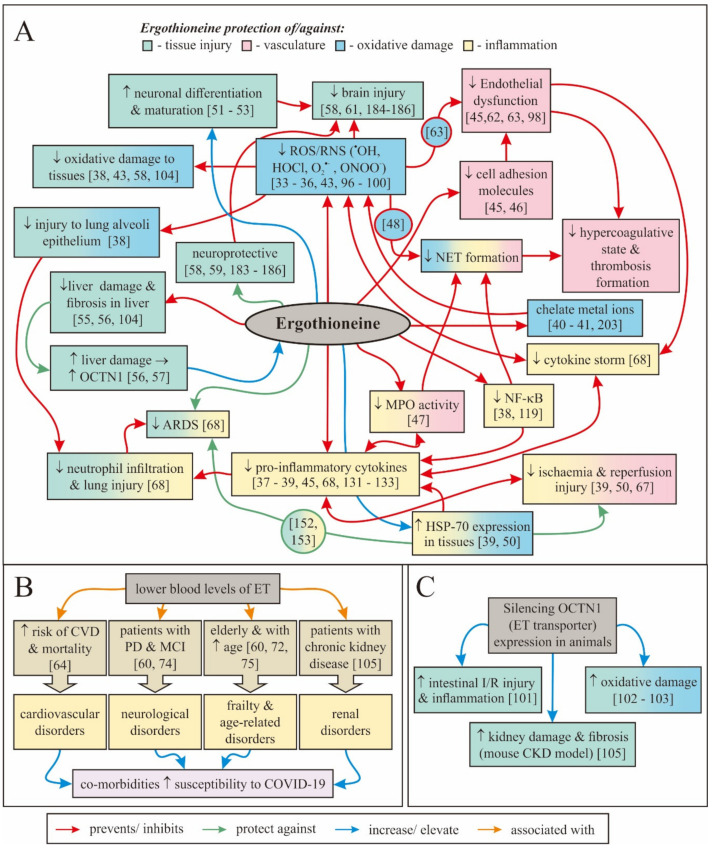
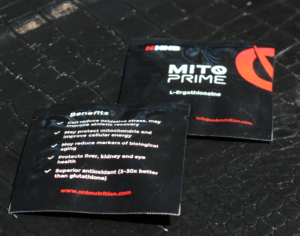
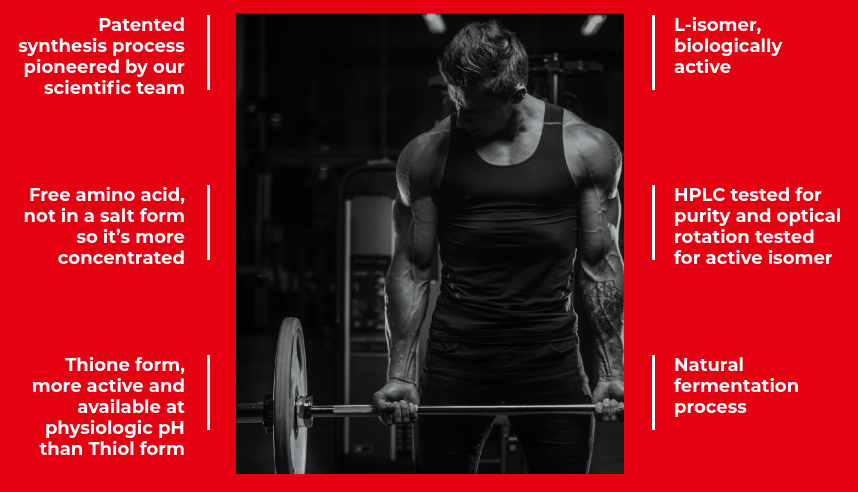

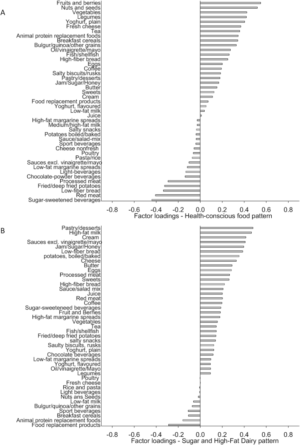
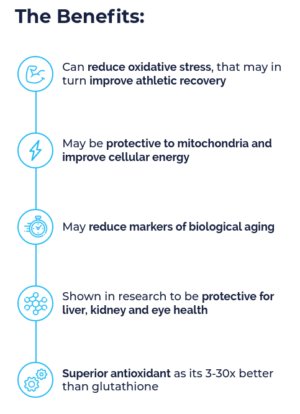
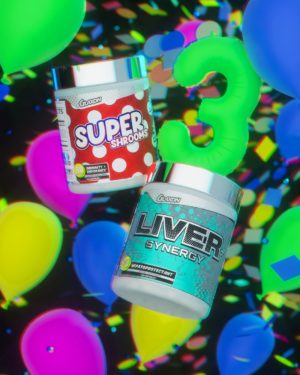
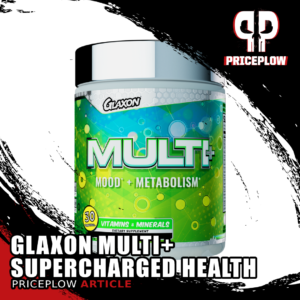


Comments and Discussion (Powered by the PricePlow Forum)